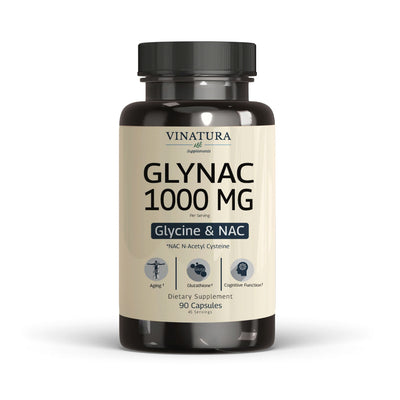
Kanna vs Kratom: What Are The Differences?
Kanna vs. Kratom: What Are the Differences? Kanna and Kratom are gaining popularity among fans of natural supplements. While both are plant-based and used to improve mood and health, they have distinct characteristics regarding their origins, effects, and methods of use. In this article, we will explore these differences so you can choose the product that suits you best!
Before exploring further, please read the disclaimer located at the end of this webpage.
Key Takeaways
- Kanna is often used to elevate mood and reduce stress, whereas Kratom can help relieve pain and boost energy.
- Kanna is believed to be non-addictive, but Kratom carries a risk of addiction and serious side effects.
- Kanna is commonly chewed or brewed as tea, while Kratom can be consumed as powder, capsules, or tea.
Understanding Kanna

What Is Kanna?
Kanna (Sceletium tortuosum) is a valuable herb native to South Africa, belonging to the Mesembryanthemaceae family. Known as coughed, it has been used by the San and Khoikhoi tribes to combat thirst and fatigue and for medicinal purposes. Kanna is noted for its ability to enhance feelings of happiness and reduce stress [1].
Kanna extracts have various biological properties, and its alkaloids are now being used as dietary supplements. Current research focuses on its potential to reduce anxiety and depression and improve mood, emphasizing Kanna's significant role in promoting health in modern life.
How Does Kanna Work?
Kanna contains several important alkaloids, particularly mesembrine—a compound known for enhancing serotonin activity, a neurotransmitter that affects mood. Mesembrine and other alkaloids like mesembrenone and mesembranol also help regulate GABA, which reduces stress and promotes relaxation [1].
Kanna Potential Benefits
Kanna is a South African herb with various potential benefits for mental and physical health:
- Reduces Stress and Anxiety: Kanna extract helps alleviate stress and anxiety by inhibiting the MAO-A enzyme and activating GABA receptors, leading to relaxation and improved mood [1].
- Combats Depression: Kanna contains alkaloids such as mesembrine and mesembrenone, which can increase serotonin levels and aid in reducing mild to moderate depression [1].
- Pain Relief and Anti-Inflammatory Properties: Historically, Kanna has been used as a natural pain reliever. Its compounds help reduce inflammation and regulate the immune response, aiding in pain relief and reducing the body’s inflammatory reactions [1].
- Antioxidant and Antibacterial Effects: Kanna is rich in powerful antioxidants like anthraquinone and polyphenol, which protect cells from damage and may have antibacterial and antiviral potential [1].
- It is beneficial in reducing inflammatory diseases such as asthma, chronic obstructive pulmonary disease, and psoriasis; it also supports the treatment of anxiety and depression [2].
Understanding Kratom

What Is Kratom?
Kratom, scientifically known as Mitragyna speciosa, is a tree native to Southeast Asia and used in traditional medicine for centuries. The main compounds in Kratom leaves, such as Mitragynine and 7-hydroxy mitragynine, can interact with opioid receptors in the central nervous system, providing pain relief, mood enhancement, and even aiding in opioid withdrawal [3].
Research indicates that Kratom's effects include effective pain relief, relaxation, and energy enhancement at different dosages. However, the potential side effects and addictive properties of Kratom have been documented, so its use should be monitored and controlled carefully to ensure safety.
How Does Kratom Work?
Kratom works due to the main compounds found in its leaves, particularly Mitragynine and 7-hydroxy mitragynine. These compounds interact with opioid receptors in the central nervous system, similar to how some opioid pain relievers function. When taken at low doses, Kratom can provide energy-boosting effects and improve mood. In contrast, at higher doses, it produces pain relief and relaxation.
Kratom's pain-relieving and relaxing properties have made it a natural alternative to traditional pain medications [3].
Kratom Potential Benefits
Kratom may offer several potential benefits, including [4]
- Pain Relief: Kratom effectively alleviates pain due to alkaloids like Mitragynine, helping manage chronic pain conditions.
- Mood Improvement: Many people use Kratom to self-help mood disorders such as anxiety and depression, thanks to its mood-enhancing effects.
- Energy Boost: At low doses, Kratom acts as a stimulant, increasing alertness and energy levels.
- Reducing Withdrawal Symptoms: Kratom may assist individuals in opioid withdrawal by minimizing cravings and discomfort.
- Cognitive Function Improvement: Kratom helps enhance focus and cognitive abilities.
- Anti-Inflammatory Effects: Preliminary studies suggest Kratom may have anti-inflammatory properties, potentially benefiting those with inflammatory diseases.
Kanna vs Kratom: What Are The Differences?
|
Criteria |
Kanna |
Kratom |
|
Plant Origin |
South Africa |
Southeast Asia (mainly Thailand, Malaysia) |
|
Active Compounds |
Mesembrine, mesembrenone, and other alkaloids |
Mitragynine, 7-hydroxymitragynine |
|
Cultural Background |
Traditional use by South African natives |
Traditional use by Southeast Asian communities |
|
Forms of Consumption |
Chewed, brewed as tea, snuffed, tinctures, smoked or vaped, dietary supplements |
Capsules, extracts, tea, chewed fresh or dried leaves, powder, dietary supplements [5] |
|
Legal Status |
Legal in most countries, including the U.S. (except Louisiana), not controlled as a narcotic, but consumers should check local regulations before use or purchase |
Currently not federally controlled in the U.S., but legality varies by state, with some states and localities (like Alabama and Arkansas) issuing complete bans or considering regulations on use, sale, and possession. Kratom is banned in several countries, including Australia, Japan, and South Korea [6]. |
|
Taste and Smell |
Bitter taste, mild aroma |
Bitter taste, earthy smell, which may be unpleasant for some |
|
Dosage and Effects |
Dosage: Research indicates 25 mg of Kanna is safe for use from 8 days to 9 weeks [2]. Side effects: Weight gain, increased appetite, thirst, fatigue, headaches, chest pain, nausea, vomiting, constipation, genital discomfort, muscle stiffness, drowsiness, difficulty concentrating, confusion, and depression, although it does not cause withdrawal symptoms when discontinued. |
Dosage of Kratom affects its effects, with stimulating effects at low doses (1-5 g) and sedative effects at higher doses (5-15 g) [7]. Kratom can cause various side effects, including nausea, itching, sweating, dry mouth, constipation, increased urination, rapid heartbeat, vomiting, drowsiness, and decreased appetite. Users may also experience loss of appetite, weight loss, insomnia, liver toxicity, seizures, and hallucinations [5]. Additionally, it has potential for addiction, leading to dependence. |
|
Duration of Effects |
The effects of Kanna vary by individual, lasting from 1 hour to several hours. |
The duration of effects for Kratom at low doses (1-5 g) is 60 to 90 minutes, while at moderate to high doses (5-15 g), it lasts for several hours; doses over 15 g may cause extreme drowsiness and loss of consciousness [8]. |
|
Pros |
Versatile uses: Can help reduce anxiety, enhance mood, and improve focus. No withdrawal syndrome: Stopping does not cause withdrawal symptoms, making it safer for users. |
Effective pain relief: Used to alleviate pain and reduce withdrawal symptoms. Dose-dependent effects: Stimulant effects at low doses and sedative effects at high doses, allowing users to adjust according to needs. |
|
Cons |
Side effects: Can cause some side effects such as weight gain, increased appetite, and fatigue. Unstandardized dosing: Lack of clinical data on recommended dosages and long-term effectiveness. Short duration: Effects may be inconsistent, lasting from 1 hour to several hours. |
Serious side effects: Can cause various side effects like nausea, dizziness, and potential for addiction. Health risks: Associated with symptoms like insomnia, liver toxicity, and seizures. Unstable legality: Some states have issued bans or are considering regulations regarding use and possession. |
Kanna vs. Kratom: Are They Legal?
Kanna primarily originates from South Africa and is considered legal in many countries, including the U.S. However, there may be differences at the local level, so it’s essential for consumers to check local regulations before purchasing or using this product. Although Kanna is not controlled as a narcotic, some states may have specific regulations.
In contrast, Kratom has a more complex legal status. In the U.S., Kratom is not federally controlled, but its legality varies by state. Some states, like Alabama and Arkansas, have completely banned Kratom or are considering strict regulations regarding its use, sale, and possession. Additionally, Kratom is banned in several countries, including Australia, Japan, and South Korea.
Therefore, before deciding to use Kanna or Kratom, you should thoroughly research the legal status in your area. Kanna is generally considered more legal and safer, while Kratom may face more legal risks due to the inconsistency in regulations between states and countries.
Kanna vs. Kratom: Which One is Better For You?
When it comes to determining whether Kanna or Kratom is better, there isn't a definitive answer.
Although Kanna and Kratom may sound similar, they are actually two completely different herbs, both in terms of origin and effects. Kanna is used to enhance mood and reduce stress. Many people chew Kanna leaves or brew them into tea, which helps them feel comfortable and relaxed without causing drowsiness. Interestingly, Kanna is considered non-addictive, so anyone can try it without much worry.
On the other hand, Kratom is a plant that locals have used for a long time for pain relief and energy enhancement. Depending on the dosage, Kratom can act as either a stimulant or a sedative. However, it's important to note that Kratom can cause some serious side effects if used improperly and carries a risk of addiction.
So, when it comes to choosing between Kanna and Kratom, it depends on what you need. If you’re looking for a natural solution to boost your mood without the worry of addiction, Kanna might be the right choice. Conversely, if you need pain relief or are looking for an energy boost, consider using Kratom. Just remember, whatever you choose, make sure to research thoroughly and use it responsibly!
Conclusion
The above highlights the differences between Kanna and Kratom. Both herbs are appealing options for those seeking natural solutions for health and mood. However, each has its own characteristics that you need to understand before using. Always remember to do your research and use it responsibly to ensure your health and safety.
References
- [1] Manganyi MC, Bezuidenhout CC, Regnier T, Ateba CN. A Chewable Cure “Kanna”: Biological and Pharmaceutical Properties of Sceletium tortuosum. Molecules. 2021;26(9):2557. doi:https://doi.org/10.3390/molecules26092557
- [2] https://www.facebook.com/Drugscom. Sceletium Tortuosum Uses, Benefits & Dosage Herbal Database. Drugs.com. Published 2023. Accessed October 30, 2024. https://www.drugs.com/npp/sceletium-tortuosum.html
- [3] Murali K, Krishna V, Krishna V, et al. Effectiveness of Kanna photoscreener in detecting amblyopia risk factors. Indian Journal of Ophthalmology. 2021;69(8):2054-2049. doi:https://doi.org/10.4103/ijo.ijo_2912_20
- [4] Grundmann O, Hendrickson RG, Greenberg MI. Kratom: History, pharmacology, current user trends, adverse health effects and potential benefits. Disease-a-Month. 2022;69(6):101442-101442. doi:https://doi.org/10.1016/j.disamonth.2022.101442
- [5] Kratom WHAT IS KRATOM?; 2020. https://www.dea.gov/sites/default/files/2020-06/Kratom-2020_0.pdf
- [6] Office. FDA and Kratom. U.S. Food and Drug Administration. Published 2024. Accessed October 30, 2024. https://www.fda.gov/news-events/public-health-focus/fda-and-kratom
- [7] Sanderson M, Rowe A. Kratom. Canadian Medical Association Journal. 2019;191(40):E1105-E1105. doi:https://doi.org/10.1503/cmaj.190470
- [8] Short-Term and Long-Term Effects of Kratom Use. DrugAbuse.com. Published August 8, 2024. Accessed October 30, 2024. https://drugabuse.com/drugs/kratom/effects-use/
Author

Product Disclaimer
The dietary supplement products mentioned on this website are formulated based on scientific research and adhere to FDA guidelines for dietary supplements. However, the content of the articles has not been evaluated by the Food and Drug Administration (FDA) and is not intended to promote or endorse any specific product. Any products sold on this website are not intended to diagnose, treat, cure, or prevent any disease.
Opinions and Endorsements
Any claims, statements, or opinions expressed in the articles are those of the author(s) and do not necessarily reflect the views or opinions of the manufacturers of the dietary supplement products. The products sold on this website are separate from the content of the articles and are not directly endorsed or associated with the information presented here.
Liability Disclaimer
The author(s) of the articles, website, and manufacturers of the dietary supplement products do not assume any liability for any potential consequences arising from the use of the information provided in the articles. It is recommended that individuals consult with a qualified healthcare professional before making any dietary or lifestyle changes, including the use of dietary supplements.
Product Usage
Please refer to the product labels and packaging for specific usage instructions and guidelines for the dietary supplement products sold on this website.
Customer Support
For any concerns or questions regarding the dietary supplement products, please contact our customer support team, who will be more than happy to assist you.





Leave a Comment
Be the first to comment.
What do you think?